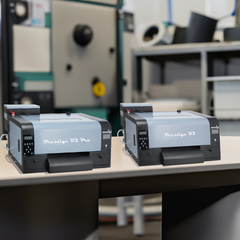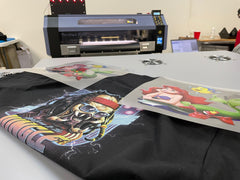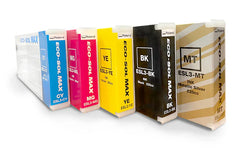Sawtoothing & How To Avoid It
Sawtoothing is the term used to describe an irregular, un-sharp printing edge. For any given fabric, edge sharpness or definition can be improved by increasing the amount of emulsion on the printing or bottom side of the fabric. Try coating twice on the print side, then apply additional coats on the squeegee side.
The purpose of this is to bolster and force out an emulsion build-up on the job side. Dry the screen horizontally, printing side down. Gravity is free of charge; let it work for you. To improve sharpness even more, add additional single coats of emulsion, with intermediate drying, to the printing side of the mesh. Remember, of course, that additional coating will require longer exposure times.
To reduce Sawtoothing, remember to start with a good quality positive. Vacuum contact between positive and emulsion during exposure will also cut down on Sawtoothing. The use of dyed fabric is another way to cut down on sawtoothing by reducing light scattering in the fabric during exposure--but remember that colored mesh requires a longer exposure than undyed fabric.
Underexposure is a prime cause of Sawtoothing, because insufficiently light hardened emulsion edges will have poor washout resistance.
The washout itself must be thorough so that all unhardened emulsion is removed from image areas...and image edges. Where multiple coating still result in unsatisfactory edge sharpness (or loss of resolution), finer mesh must be used, consistent with the maximum fabric fineness recommended by the manufacturer of the ink you are using.
Summertime Tip: Stencil makers often spend the summer with their fingers crossed, hoping their direct emulsion stencils will survive the next heat wave. Ulano direct emulsions, for example, are specially formulated to resist summertime heat, humidity and dampness. For best results, increase normal exposure time to insure proper hardening of the stencil. Use a Step Wedge, and go as far as you can consistent with the resolution you want.





